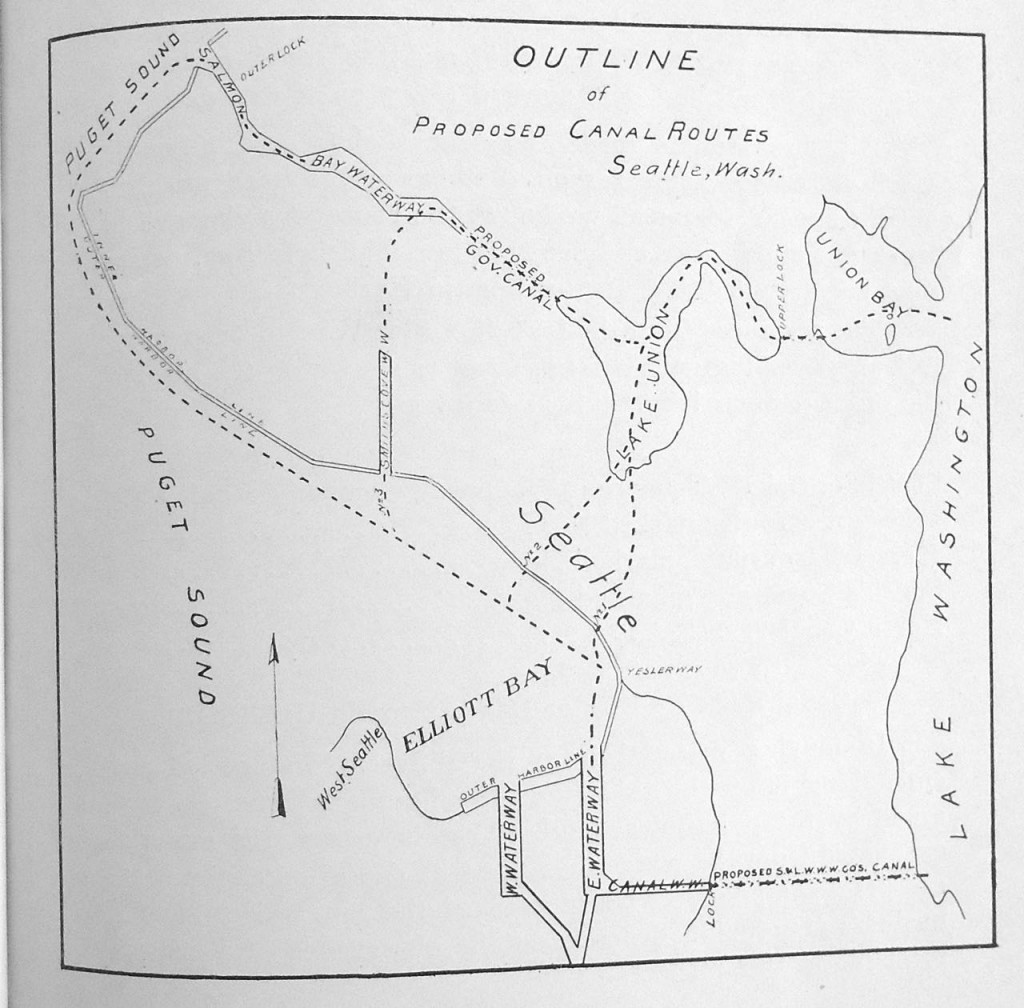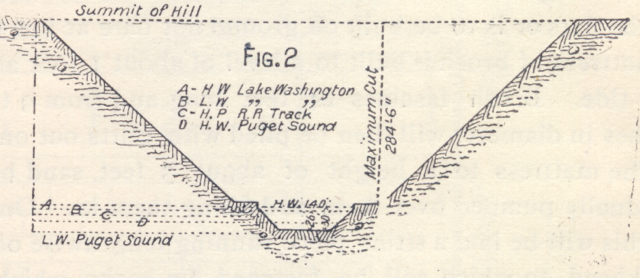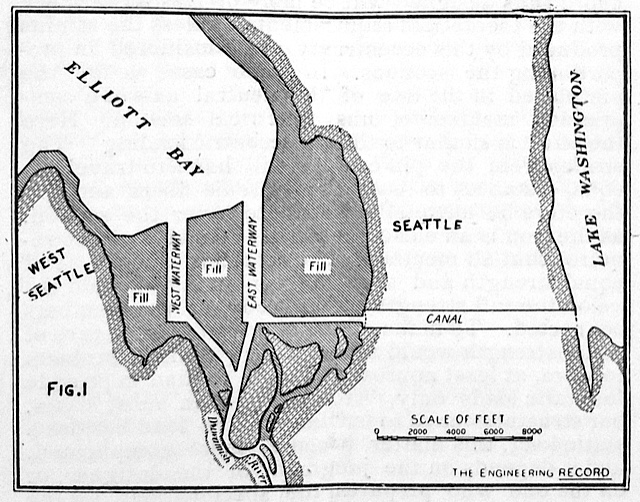Following up my map showing the planned for but never executed South Ship Canal through Beacon Hill, I have a map that shows other potential ship canals. These are for the north end of the city. Map is from History and Advantages of the Canal and Harbor Improvement Project Now Being Executed by the Seattle and Lake Washington Waterway Company (1902).
All of these routes were put forward in an 1871 description by Brig. Gen. Barton Alexander titled “Ship-Canal in Washington Territory.” The United States government was interested in a canal to facilitate naval vessels docking in Lake Washington’s less damaging fresh water, instead of in the salt water of Puget Sound. For each total length is from foot of Yesler Way to deep water in Lake Washington.
1. Pike Street Route – South end of Lake Union up Westlake Avenue (which did not exist at the time) to Pike Street to Elliott Bay = 6.5 miles
2. Mercer Farm Route – Direct route to Lake Union at about Battery Street = 6.9 miles
3. Smith’s Cove (Interbay) Route – Total length = 10.5 miles
4. Salmon Bay to Lake Union = 16.9 miles
Despite having to make a 119-foot-deep cut for his favored routes (Mercer Farm and Pike Street), Alexander rejected a canal connecting Lake Union and Salmon Bay because it required too much dredging and would suffer from exposure to the “cannonade of an enemy in time of war.” In his conclusion, Alexander observed that the Puget Sound region offered one of only three places on the Pacific coast to build a secure port for the United States navy but the area possessed too few people and resources to justify further study.
Not until 1917 did a ship canal open. Of course, that is the modern one from Salmon Bay through Lake Union to Lake Washington.

Material for for this story comes out of research I have done for my new book on Seattle – Too High and Too Steep: Reshaping Seattle’s Topography.
If you so desire, you can like my geologywriter Facebook page.

